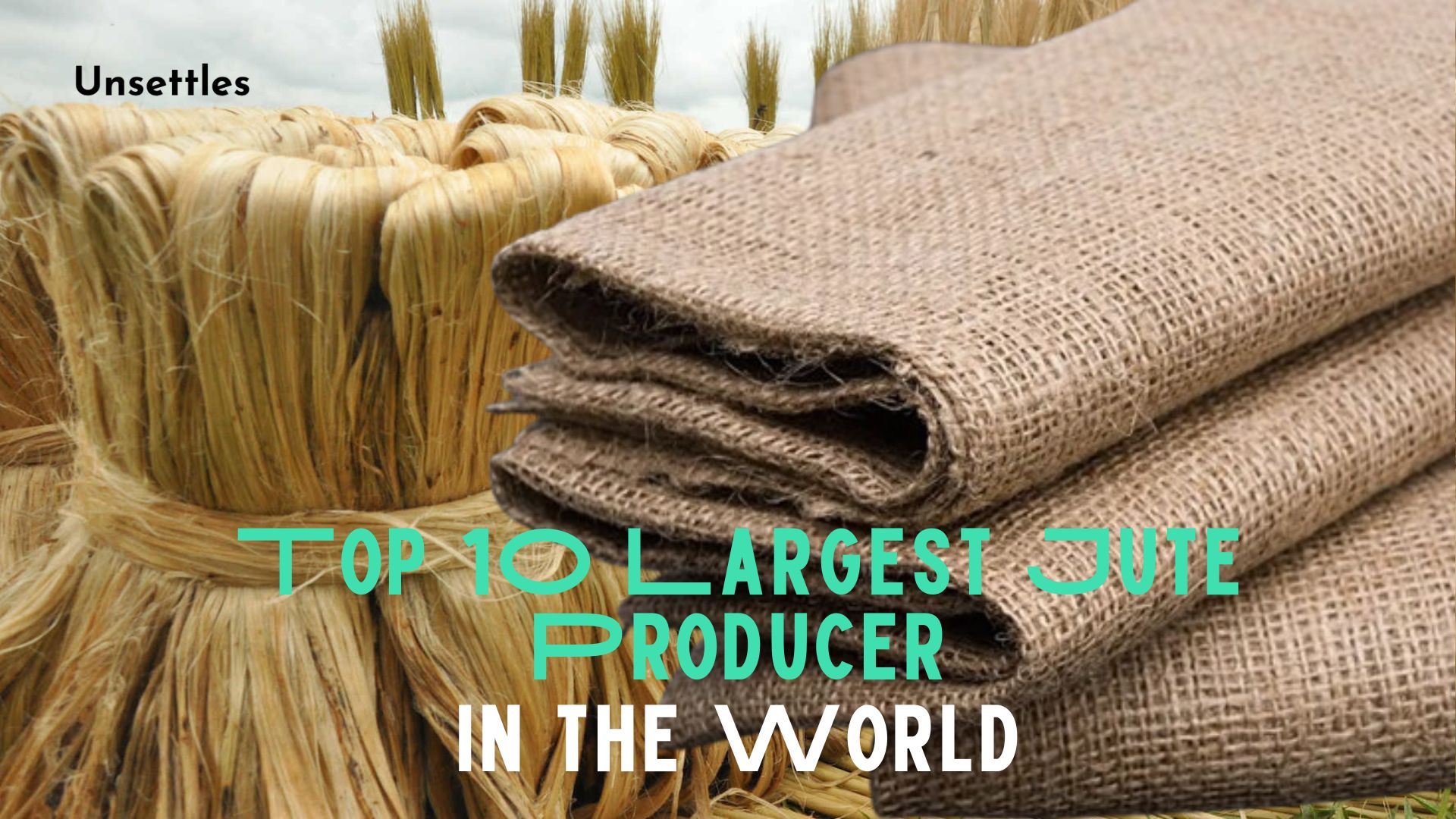Jute, also known as the “Golden Fiber,” is a vital natural material with significant global demand due to its eco-friendliness and versatility. It is widely used across various industries, making it a key commodity in sustainable production. To meet this increasing global demand, several countries have emerged as top jute producers. Below, we present a list of the top 10 jute-producing countries in 2024.
Top 10 Jute-Producing Countries in the World
- India – 1,720,000 tons
India leads the world in jute production, with an impressive 1,720,000 tons annually. The country’s fertile soil, favorable climate, and long-standing tradition of jute farming contribute to its dominance. India’s proximity to the Ganges Delta, where the best jute is grown, plays a significant role in its high production. The state of West Bengal is the heart of India’s jute industry, producing the majority of this “golden fiber.” By embracing sustainable farming techniques, India has also positioned itself as a global leader in eco-friendly jute production, meeting growing demand for sustainable products.
- Bangladesh – 1,681,939 tons
Closely following India, Bangladesh produces 1,681,939 tons of jute annually. Jute is not just a major crop in Bangladesh but a crucial part of its economy. The country benefits from its strategic location near the Ganges Delta, making it one of the best places in the world for jute cultivation. Bangladesh has also invested heavily in research and development to improve the efficiency and sustainability of jute farming, cementing its place as a global leader in the jute market.
- Uzbekistan – 19,099 tons
Uzbekistan ranks third in jute production with 19,099 tons. Although its production is far lower than India and Bangladesh, Uzbekistan has emerged as a key player in the jute market due to its strategic focus on agricultural diversification. The country’s efforts to cultivate jute reflect its commitment to global sustainability goals. By investing in modern farming techniques, Uzbekistan has successfully integrated jute into its agricultural portfolio, contributing to the global demand for eco-friendly materials.
- China – 15,700 tons
China, producing 15,700 tons of jute annually, is steadily gaining prominence in the global jute market. With vast agricultural resources and advanced farming technology, China has quickly adapted to the growing demand for sustainable products. Though not traditionally known for jute, China’s increased focus on the fiber underscores its versatility and expanding role in the global transition to eco-friendly materials.
- Nepal – 10,451 tons
Nepal, with an annual production of 10,451 tons, is a significant producer of organic and sustainable jute. The country’s ideal climate for jute cultivation has allowed it to grow high-quality, eco-friendly fiber. Nepal’s commitment to sustainable farming practices ensures that its jute production aligns with global environmental standards, contributing to the worldwide supply of green materials.
- South Sudan – 3,720 tons
South Sudan is a newcomer to large-scale jute production, yielding 3,720 tons per year. Despite various challenges, the country has shown great potential in agriculture, especially in cultivating sustainable crops like jute. South Sudan’s growth in this sector demonstrates its dedication to diversifying its economy while contributing to the global demand for sustainable raw materials.
- Zimbabwe – 2,692 tons
Zimbabwe produces 2,692 tons of jute annually, reflecting the country’s resilience in agriculture. Despite facing economic difficulties, Zimbabwe’s jute production remains strong, showcasing the adaptability of its farmers. The country’s contribution to the jute industry highlights the fiber’s versatility and its potential to support sustainable development, even in challenging agricultural environments.
- Egypt – 2,283 tons
With a long history of agriculture, Egypt produces 2,283 tons of jute each year. The nation combines traditional farming methods with modern agricultural technology to maintain a steady output of jute. As global demand for eco-friendly materials continues to rise, Egypt’s sustainable farming practices ensure that it remains a key player in the international jute market.
- Vietnam – 428 tons
Though Vietnam produces only 428 tons of jute annually, it has shown increasing interest in the cultivation of this sustainable fiber. Vietnam’s jute production may be small compared to other countries, but it reflects a broader shift towards green agriculture. As consumer demand for sustainable products grows, Vietnam’s jute industry is poised to expand, contributing to the global supply of eco-friendly materials.
- Bhutan – 343 tons
Bhutan rounds out the list with 343 tons of jute production annually. Although its contribution to the global jute market is modest, Bhutan emphasizes traditional farming methods and eco-friendly practices. The country’s focus on sustainability and its commitment to environmental preservation make it an important player in the growing demand for jute as a green material.
Conclusion
As the world increasingly moves towards eco-friendly alternatives, jute stands out as a vital resource. These 10 countries play a critical role in meeting global jute demand, offering high-quality fiber for a variety of industries. With rising environmental concerns, jute’s importance will likely grow, and these nations are well-positioned to lead the charge in providing sustainable solutions to the world’s needs.
